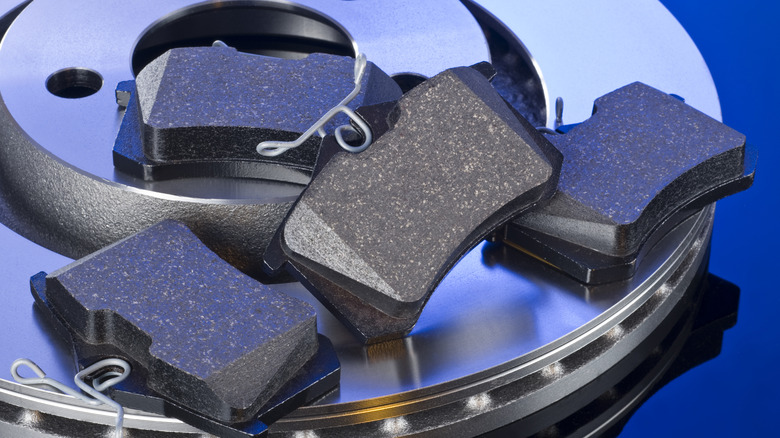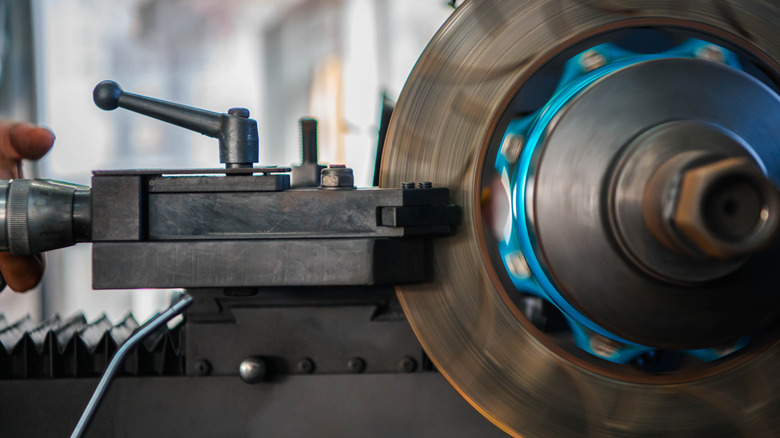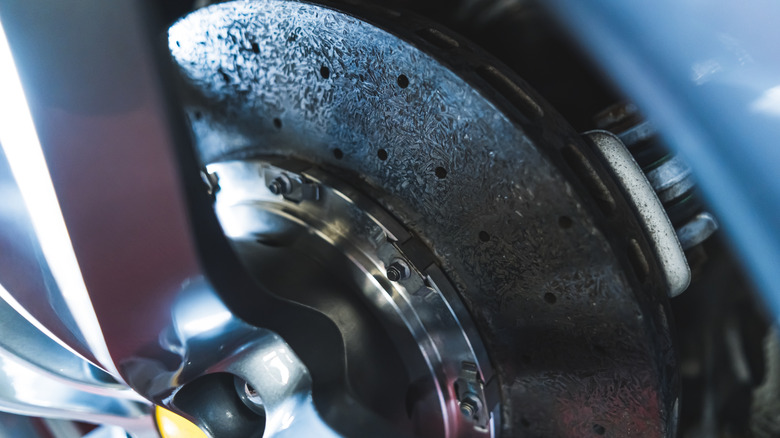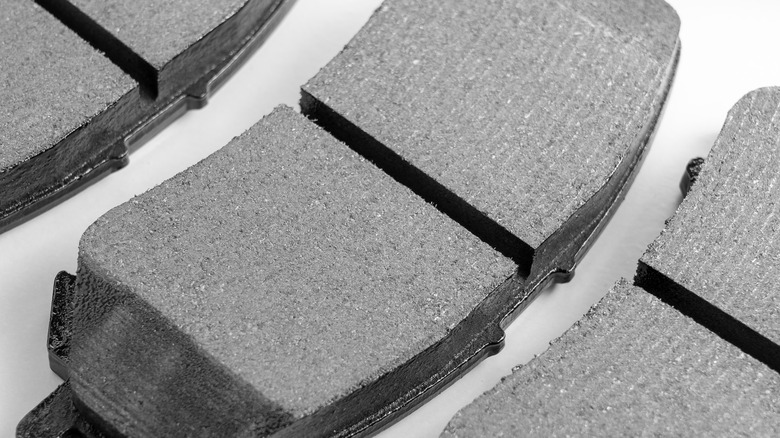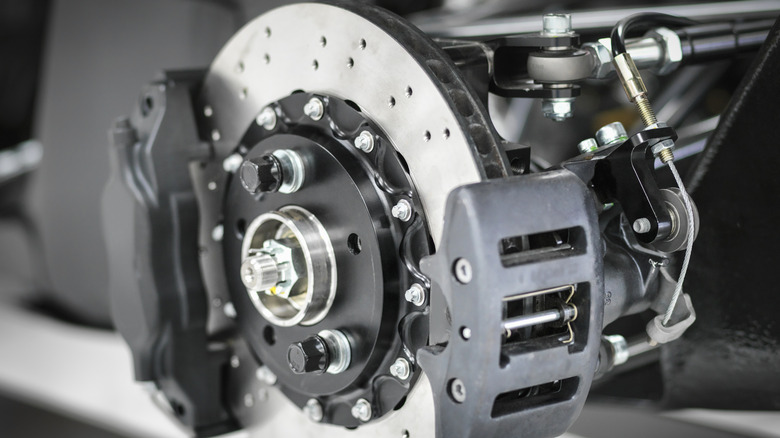Brake Pad Materials Breakdown: Differences, Benefits, And The Best Choices
Is it time to get your brake pads changed? Before you choose just any set of brake pads, it'd be best to get familiar with all the different brake types available. You could save some money or improve your performance with a simple change. There are four types of brake pads available on the market: Organic, ceramic, metallic, and semi-metallic. Sometimes, manufacturers will call some of these pad types something else, such as non-asbestos organic or NAO brake pads.
Naming schemes aside, when you're looking at brake pads, you're looking at pads made of one of the material types listed above. Take a look at the list of materials on a manufacturer's page for the brake pads you're looking at, and you can quickly determine which type of brake pad you're looking at. Generally, fully metallic brakes are not common in the consumer market, so you'll be looking at brake pads made of organic materials, a combination of metals and other materials, or are made from ceramic.
They all have specific advantages and disadvantages in areas like durability, noise, cost, and the amount of dust they create. No brake pad material will be perfect for everyone, but with the proper knowledge, you'll be able to identify the type that's best for your needs.
Organic brake pads
Organic brake pads have an interesting history. Originally, these brake pads (among other car components) had asbestos in them, and it was a commonly used material. Some overseas brands still use it today, though the material is slowly being phased out. If you replace your own brake pads and have an older vehicle, make sure you're properly protecting yourself against asbestos dust.
Today, organic brake pads, or Non-Asbestos Organic (NAO) brake pads, are more commonly used in the U.S. Organic brake pads use a mix of materials such as fiberglass, rubber, and sometimes Kevlar bonded with a resin. This creates brake pads that are softer than the other options on the market, which makes for a quieter stop. Organic brake pads are also some of the cheaper options on the market.
While these are all benefits, organic brake pads have some drawbacks. These types of pads will wear down quicker than other options, and their softness produces more brake dust. As such, organic brake pads are often recommended for city drivers who don't frequently use the highway.
Ceramic Brake Pads
The word "ceramic" may not be something you think of when it comes to brake pads, but ceramic brake pads are an excellent choice for many drivers. These brake pads are made mostly of dense, durable ceramic, as well as other materials to help with friction and heat distribution. Originally, ceramic brake pads also had copper fibers in them, but after the EPA launched the Copper-Free Brake Initiative in 2015, the fibers have since been removed.
Ceramic brake pads are often on the quiet side — less so than metallic pads but a bit louder than organic ones — but their real strength lies in their durability. Ceramic pads have a longer lifespan than their organic and metallic counterparts, and due to their material, they also produce the least amount of brake dust. But ceramic brake pads are expensive, more so than other brake pad types, so this performance comes at a cost.
Also, ceramic brake pads take longer to heat up (though they have great heat dispersion overall) and won't perform well in extremely cold temperatures. That said, ceramic brake pads will be ideal for those who drive further and more often than their city-driving counterparts. If you're on the highway a lot or drive a lot for work, it's a good idea to look into ceramic brake pads for your next replacement.
Metallic and semi-metallic brake pads
Metallic and semi-metallic brake pads are on the opposite end of the scale from organic brake pads. While full metallic brakes do exist, for any average consumer, you'll be looking at semi-metallic brake pads for your car. Even when a particular manufacturer states that their brake pads are metallic, they will likely be semi-metallic brake pads. While the two names being used interchangeably can be confusing, metallic brakes are only going to be used on very specialized vehicles.
Semi-metallic brake pads are composed of 30-70% metals (typically a mixture of iron, copper, steel, and other metals), and are typically bonded with graphite instead of resin. There are also low-metallic brake pads, which only have 10-30% of metals with inorganic filler. Whether semi-metallic or low metallic, the inclusion of metal makes these brake pads very durable — more so than other pad choices. These brake pads also have great stopping power, distribute heat well, and work well at a wide range of temperatures. Finally, in terms of price, metallic pads are more expensive than organic pads but still less expensive than their ceramic counterparts.
However, semi-metallic brake pads are loud, which you might expect from a metallic pad that will create friction against other metallic components — and that grinding will also provide a fair amount of brake dust. In addition, due to the materials, semi-metallic brake pads wear out your brake rotor faster than other options on the market. Generally, semi-metallic brake pads are recommended for performance driving and trucking.
Which brake pad is the best?
There is no brake pad suitable for every situation, so before deciding on a brake pad, you'll need to consider how you drive and what sort of vehicle you have. In many ways, ceramic brake pads will be the best choice for the average driver. These brake pads are quiet, produce the least dust, and are very durable.
However, they're also on the expensive side, and if you're not one to drive your car often, they can be overkill. If you keep most of your driving to the city, organic brake pads will likely be a better option — while they wear out faster, they're cheaper and still work well, so if you're not going on the highway or taking road trips often, these will work great.
Semi-metallic brake pads are mainly for those who do more specialized driving than the average person. So they're best suited for long-haul and performance driving, where the superior braking is worth the trade-off of the noise and wearing down your rotors faster.
